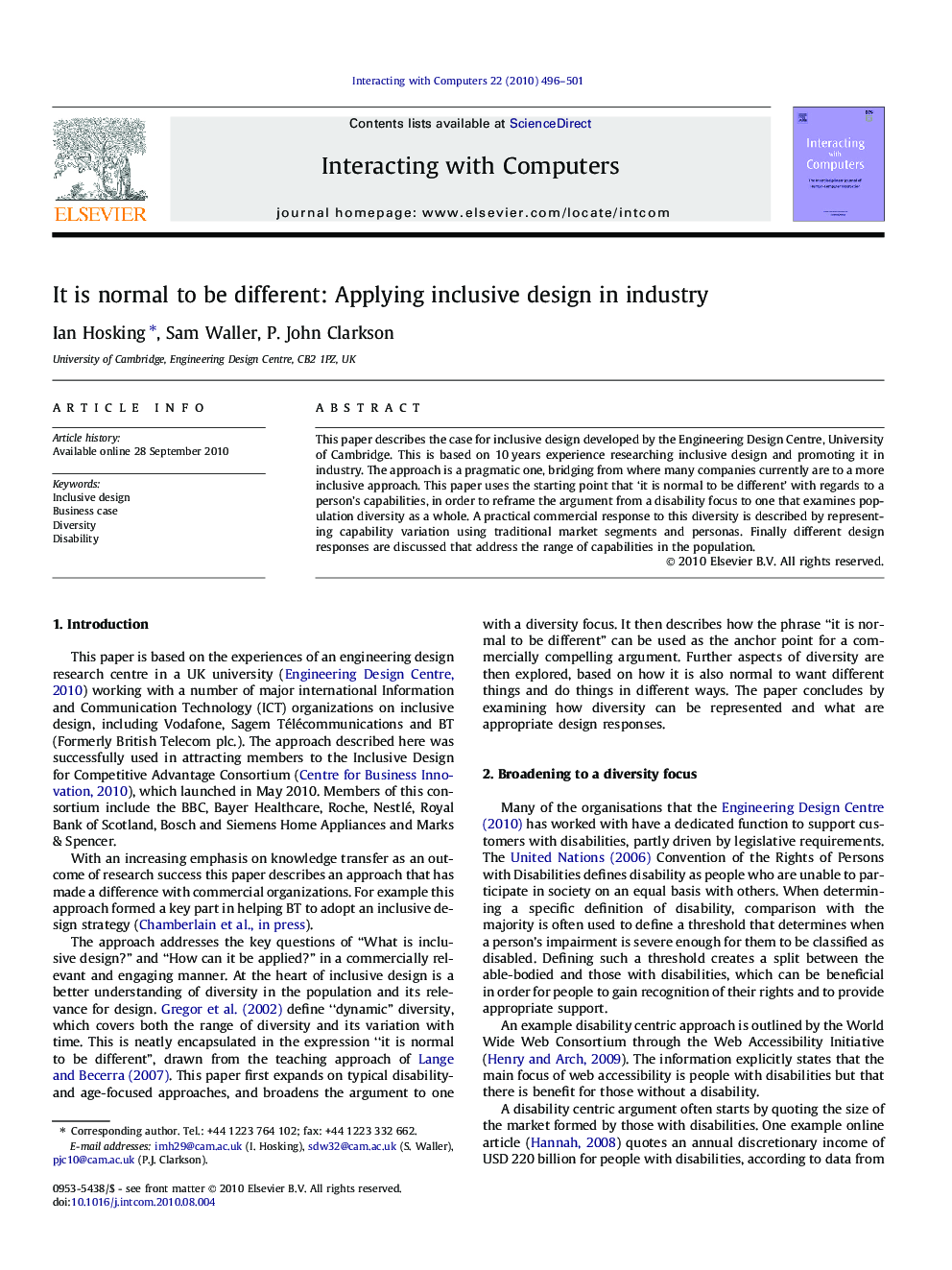| Article ID | Journal | Published Year | Pages | File Type |
|---|---|---|---|---|
| 553044 | Interacting with Computers | 2010 | 6 Pages |
This paper describes the case for inclusive design developed by the Engineering Design Centre, University of Cambridge. This is based on 10 years experience researching inclusive design and promoting it in industry. The approach is a pragmatic one, bridging from where many companies currently are to a more inclusive approach. This paper uses the starting point that ‘it is normal to be different’ with regards to a person’s capabilities, in order to reframe the argument from a disability focus to one that examines population diversity as a whole. A practical commercial response to this diversity is described by representing capability variation using traditional market segments and personas. Finally different design responses are discussed that address the range of capabilities in the population.
Graphical abstractA segmented pyramid shows a severity based breakdown of capability losses covering vision, hearing, cognitive, speech and dexterity difficulties that affect daily tasks and employment, which helps target appropriate design responses.Figure optionsDownload full-size imageDownload as PowerPoint slideResearch highlights► Presents a case for inclusive design that is compelling to business. ► Demonstrates the value of focusing on diversity not disability. ► Represents diversity using a segmented pyramid. ► Targets design responses using the pyramid model.
